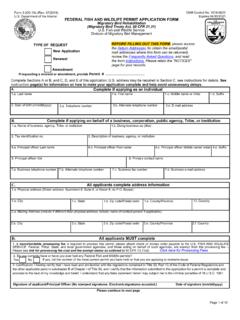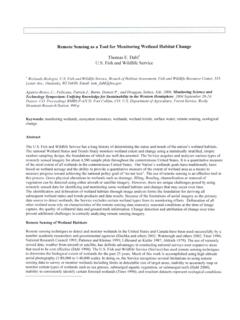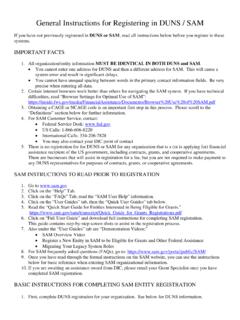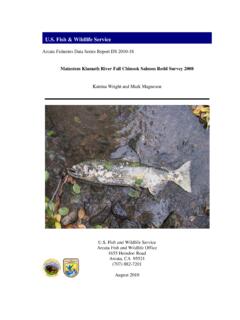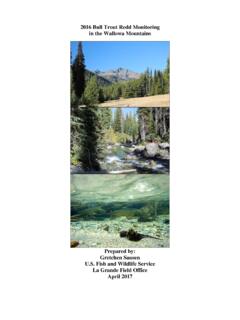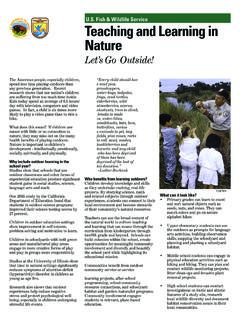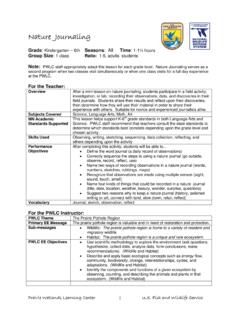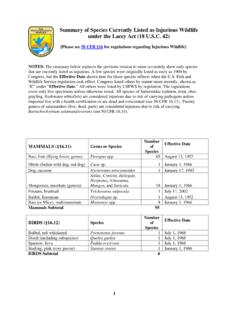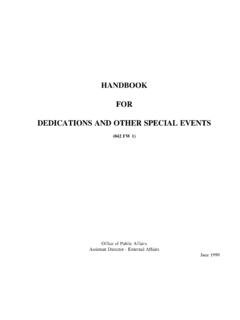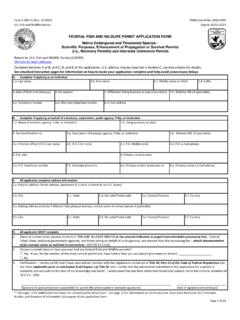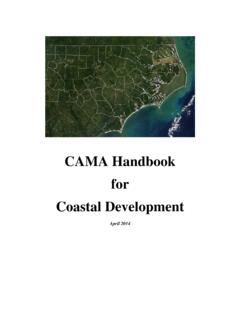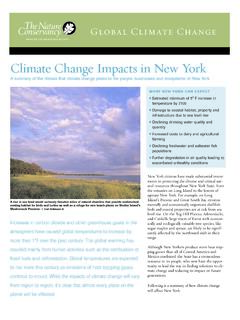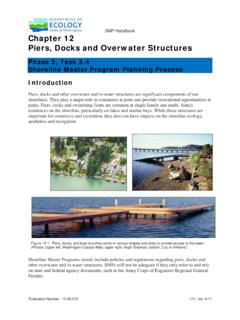Transcription of PHRAGMITES: Questions and Answers - FWS
1 phragmites : Questions and AnswersWhat isPhragmites?( phragmites australis)How didPhragmites gethere?Non-native phragmites ,also known as commonreed, is a perennial,aggressive wetland grassthat outcompetes nativeplants and displacesnative animals. Becauseof its height and itsdistinctive, fluffyseedheads, phragmites iseasy to spot, even bytraveling studies have confirmed that there IS a native variety ofPhragmites along the Eastern seaboard of the United phragmites stands have been found in a few New Englandmarshes. However, native phragmites has always been a rare,non-invasive species that grows in mixed wetland plant , invasive phragmites can be found across North America anddominates along the Atlantic coast where few native Phragmitespopulations remain. For specific information on distinguishingnative from non-native phragmites , view the Powerpointpresentation at rest of the information in this fact sheetrefers specifically to non-native the early 19th century, the non-native variety, most likelyEuropean in origin, appeared incoastal ports in the easternUnited States.
2 The rapid spreadof phragmites in the 20thcentury was probably related tothe construction of railroadsand major roadways, habitatdisturbance, shorelinedevelopment, pollution futher information, please Fish and Wildlife ServiceGulf of Maine Program4R Fundy RoadFalmouth, Maine 04105 Phone: impacts: phragmites cangrow up to eighteen feet tall,obscuring views for landowners,nearby residents and impacts:Walking even a few feet into a standof non-native phragmites can bedifficult because the growth can beexceptionally dense and tall, and thevegetation can cut your skin. phragmites can also reduce nativefish and wildlife populations, limiting recreational values forbirdwatchers, walkers, naturalists, boaters and danger for nearby residents: phragmites growsrapidly, and each fall,plant material diesback, creating largeconcentrations oftinder-dry vegetationthat increase thepotential for fast-spreading fires that can threaten residential andcommercial developments on surrounding impacts: phragmites outcompetes and blocks out native salt marshvegetation and provides little or no food or shelter for mostsaltmarsh-dependent wildlife.
3 phragmites can also eliminate smallintertidal channels and obliterate pool habitat that offers naturalrefuge and feeding grounds for invertebrates, fish and can create a dense jungle of vegetation that native saltmarsh birds, furbearingmammals and even deercannot penetrate. Inaddition, decomposingPhragmites can raisethe surface elevation ofthe marsh more rapidlythan would occur withslower-growing nativesalt marsh elevationsreduce saltwaterflooding, depriving themarsh of vital nutrientsand salinity needed bynative salt marsh plants and animals. A higher and drier marsh leadsto less vigorous growth of native salt marsh vegetation, allowingPhragmites to gain a stronger foothold and continue its spread overthe is Phragmitesa problem? phragmites grows readily in disturbed wetland areas, such asdegraded salt and freshwater marshes and swamps, along streams,lakes, ponds and roadside ditches.
4 phragmites is usually an indicatorof a wetland ecosystem that is out of balance. Undersized culverts,man-made ditches, remnant dikes, abandoned hay roads,transportation corridors and other large berms or fill on the marshcan alter the natural tidal regime and limit saltwater addition, when commercialand residential landownersexpand paved roadways andparking areas, establish largegrass lawns, apply fertilizers,herbicides and pesticides, ordestroy streamside buffersof native trees and shrubs,negative impacts can also befelt in downstream of these seeminglysmall-scale individualmanagement decisions bydevelopers, landowners andrecreational users throughout the watershed can cumulatively reducetidal influence, increase runoff, reduce water quality and encouragethe establishment and spread of can be spread by wind or animal-born seeds.
5 Or byintentional introduction by people. Most commonly however, phragmites spreads by horizontal above-ground stolons andunderground rhizomes. (Stolons grow from an existing stem and areare thin, horizontal structures that grow above-ground, sprouting newplants. Rhizomes are underground horizontal stems that also send outroots and shoots to start new plants). Stolons can grow dozens offeet annually, and new plants can sprout at nodes located every fewinches along the stolon. Rhizomes, which create thick undergroundmats, can expand at the rate of 30 feet per year, with new plantssprouting all along the rhizome. In addition, tidal ice can scour andmove live rhizomes to establish new stands of equipment used in a wetland with phragmites must becarefully cleaned to avoid transporting phragmites to new locations; itonly takes a small piece of rhizome to start new plants.
6 Phragmiteshas also been unintentionally introduced by people planting it as agarden ornamental, using it for floral displays, or camouflage for duckblinds. Even phragmites that appears to be dead is likely to have viableseeds and rhizomes. Once well-established, phragmites is difficult tocontrol or doesPhragmites grow?How doesPhragmitesspread?4Is there anythinggood aboutPhragmites?Some birds, such as yellowthroat, marsh wren, salt marshsparrow and least bittern roost in phragmites . Red-wingedblackbirds and some wading birds have been documented to nestin phragmites . Other studies suggest that due to its highproductivity, limited ability to export litter, and slow decay rates, phragmites might offset problems that rapid sea level rise couldpose to many coastal can we controlthe spread ofPhragmites?
7 Landowners, locally-based conservation groups, and municipal,state and federal government staff can work in partnership torestore natural conditions by: removing undersized culverts and other tidal restrictions, breaching berms and old hay roads that cross wetlands, reducing the negative hydrological impacts of man-made drainage ditches, removing fill material dumped on wetlands, treating and removing phragmites from wetlands, and helping people understand the importance of coastal wetland restoration activities, the negative impacts of invasive species, and the opportunities for individuals and communities to help limit the spread of phragmites and other can: eliminate or reduce fertilizer, herbicide and pesticide use, increase the width of riparain buffers by maintaining or planting native trees and shrubs, reduce pavement and lawn size, avoid planting phragmites , avoid transporting phragmites -- dead or alive, and educate friends and neighbors about best management practices in your control phragmites , mowing or burning is generally unsuccessful,unless the work is repeated for multiple years.
8 Physical removal ofthe entire plant, including the dense mat of underground rhizomescan also be tried, but it tends to be costly, the heavy machineryrequired to scalp the marsh surface can have other negativeimpacts, and great care must be taken in disposing of thePhragmites to avoid introducing it elsewhere. Restoring full tidalflow to an impacted section of marsh may be effective in control-ling phragmites . However, once phragmites is well established, itmay be able to withstand restored high salinity levels. In addition,restoring full tidal flow can be impractical at locations wherelowland development was allowed after tidalrestrictions were installed. To-date, biological control has notproven to be successful, but continuing research into biologicalcontrol agents holds promise for the and targeted application of specific herbicides bylicensed applicators has proven relatively successful, especiallywhen combined with other restoration techniques restoringtidal flow, improving upland conditions to reduce negative marshimpacts, and mowing and mulching the dead phragmites afterherbicide me more aboutusing herbicides tocontrol PhragmitesLicensed applicators apply approved herbicide directly to greenPhragmites foliage, and the active ingredient moves through theplant tissues, where it kills phragmites by de-activating a proteinfound only in plants.
9 Treated plants will begin to yellow, turn brownand eventually die. The herbicide works by translocating the thetoxin throughout the plant, particularly into the stolons andnutrient-rich rhizomes, where vegetative reproductive capacity isstored. In most instances, a repeat application or two is needed toensure that nearly all of the phragmites is treated and application is generally most effective when combinedwith other control strategies that target landscape issues thatcaused the phragmites to invade in the first used to treat Phramites specifically target must therefore be careful to spray only phragmites ,because the herbicide can kill all green plants. The effects of theherbicides on birds, fish, mammals and invertebrates have beenfound to be minimal. Moreover, the herbicide has low run-offpotential because it quickly breaks down into non-toxic compoundsthat are absorbed onto soil particles and microorganisms in bothwater and sediment.
10 Therefore, the Environmental ProtectionAgency has approved application of specific herbicides by licensedapplicators to control phragmites on sensitive aquatic can I learnmore aboutPhragmites?Visit the following websitefor many links to additionalinformation on phragmites .
